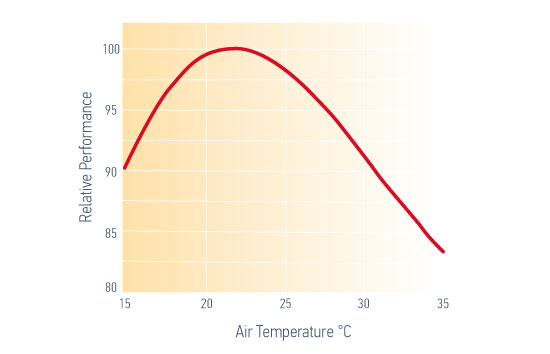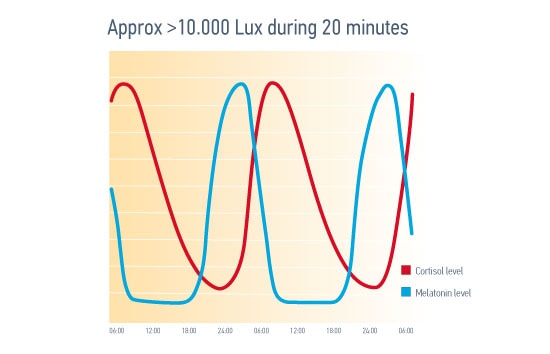Maximizing comfort and well-being
The positive effects of dynamic solar shading enable an indoor climate where visual comfort, thermal comfort, and day lighting is maximized. This in turn leads to improved health, well-being and productivity.
Why dynamic solar shading
The positive effects of dynamic solar shading enable an indoor climate where visual comfort, thermal comfort, and day lighting is maximized. This in turn leads to improved health, well-being and productivity.
A dynamic solar shading solution will prevent too high visual contrast and severe glare from occuring.

The relation between focus area and surroundings in the room should aim to stay within the 1:3:10 range.
It is crucial to create indoor environments avoiding:
A dynamic solar shading solution will prevent these situations from occuring, ensuring that your working or living environment will have the optimal balance between natural day light and visual comfort.
Several studies have proven the importance of visual comfort, some of our favorites are listed below:
Dynamic solar shading supports the management of the indoor climate in an environmentally friendly manner, leading to improved thermal comfort for the building's occupants.

The graph above visualizes the relative performance (of an office worker for example) and the indoor air temperature.
By intelligent management of the solar shading, utilizing the solar shading devices in an intelligent manner, utilizing dynamic cooling and heating strategies, our solutions support the management of indoor temperature in an environmentally friendly manner.
Below you will find reasons highlighting the importance of a correctly managed indoor temperature:
So the space we spend our time in should meet our needs.
Well-being, and cognitive performance improvements are two positive effects of natural sunlight found in studies of schools and offices.

Enough natural daylight every morning is vital for resetting our circadian rhythm , shifting between Cortisol and Melatonin as we otherwise will experience a light version of “jet-lag” with a negative effect on our well being.
Natural sunlight has proven to be an amazing source of well-being. Studies show benefits in schools where grades have improved and in offices with higher productivity and lower absenteeism rates. The UV radiation is vital for our bodies to create vitamin D and sunlight resets our biological clock every day - the balance between cortisol and melatonin.
Where does dynamic solar shading come into the picture? Solar shading is an important enabler of day lighting as it controls the flow of both direct solar radiation and diffuse radiation.
There is no artificial full spectrum source of light that approaches the luminous efficiency of natural daylight, in other words - we need the real thing!
Sunlight is free, and by reducing the use of artificial lighting it allows energy savings. Artificial lighting can amount to 35% of the running energy costs in a building... (Source: World Green Build Council 2014)